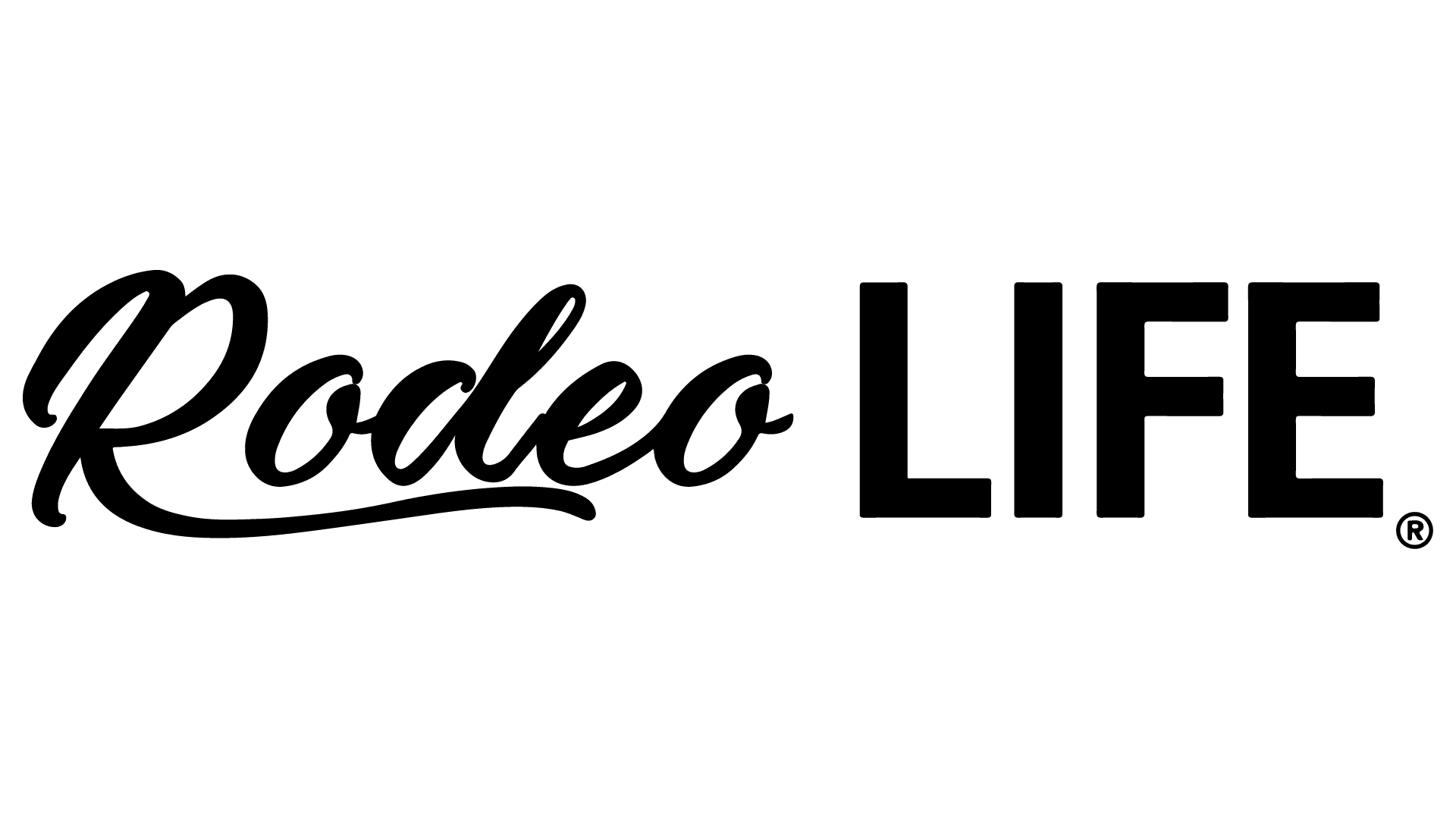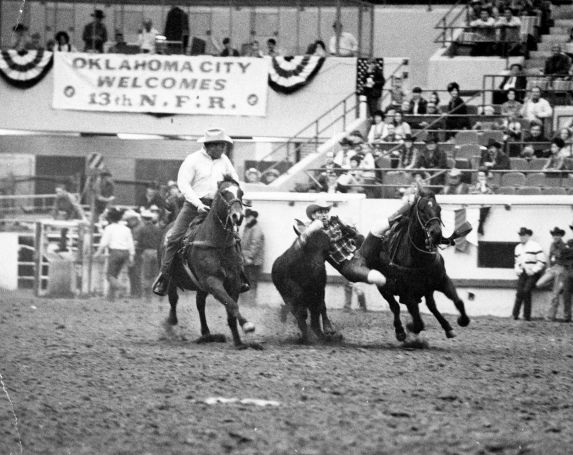Steve Gramith considers himself a “foot soldier” in the sport of rodeo. The humble man was involved as both a contestant and a pickup man, and even though he may deny it, he’s contributed his share to the sport.
He was born in St. Louis Park, Minnesota, in 1942, the son of Clifford and LuVern Gramith. The family had no ties to rodeo, but his mother’s parents had a couple hundred head of cattle, and when they left Dupree, S.D., after their general store burned down twice, his grandfather gave the cattle to a neighbor and friend.
Years later, Steve’s family would drive past the grandfather’s friend’s ranch in South Dakota. That started my enthusiasm for ranch life,” Steve remembers. From then on, he spent every summer on the family friend’s ranch, located seven miles upriver from White Horse, on the Moreau River and the Cheyenne Indian Reservation in north central South Dakota.
In 1960, Steve graduated from Waconia (Minn.) High School and went straight back to the ranch, “as fast as my little legs could carry me,” he jokes. It was college that introduced him to rodeo. He spent his freshman year at Colorado State University, and then took a year off, returning to the ranch near White Horse. He began learning to rope calves with a neighbor, Harlan Gunville. He and Harlan would head to the Timber Lake arena in the evenings, where they would rope calves. “We played, and visited, and practiced,” Steve says.
After a year off, Steve returned to college, but this time to South Dakota State University, and as a member of the rodeo team. Roping calves was his first event, but not his best. “I basically started from scratch at South Dakota State, and was really inconsistent. I’d maybe win a go-round, and then miss. The calf roping was not something I was good at.” But he soon found an event at which he was good: steer wrestling. With roping he was nervous. Bulldogging was different. “Steer wrestling was just like getting out of bed,” he says. “It was easy. There was nothing to it. There were no nerves there. I’d just grab ahold and go to the mat.”
It was at his home college rodeo, his senior year that he won the buckle he still wears: for winning first in the steer wrestling. He also won the SDSU all-around saddle that year, because he placed in the calf roping. After graduating in 1966 with an animal science degree and a minor in economics, he moved to Canning, S.D., and went to work for Erv Korkow. He had met one of Erv’s sons, Jim, at the Highmore rodeo, and Erv needed a pickup man. He became friends with Jim, and Steve found himself picking up alongside him at high school, college, and pro rodeos, and when they weren’t on the road, doing chores, feeding horses and bulls, riding colts, and driving truck. And while he was on the road with the Korkow and Sutton Rodeo Co., as it was owned by Erv Korkow and James Sutton at the time, he was able to bulldog professionally.
Steve wasn’t the only college student recruited by Jim to work for the company. Alvin Chytka, Gary Chytka, Gerald Dewey, David Daul, and others were at the ranch. And even though Erv was the boss, it was his son Jim who was the reason for the crew. “We worked for Erv and James (Sutton), but we came there for Jim. It was because of Jim. We worked like dogs, but he was friends with everybody and he was fun to be around.”
Along with picking up, Steve steer wrestled, qualifying for the National Finals Rodeo in 1971. Because he was working as a pickup man, he got to fewer rodeos than the other bulldoggers. On the weekends he wasn’t picking up, he’d make three or four. But when he picked up, he competed at that rodeo only, while other cowboys were hitting several on the same weekend. In 1971, he went to forty rodeos, “the most I’d ever gone to,” he remembers. The 1971 year end champion, in comparison, went to more than 100 rodeos.
He also held the record for the fast time at the NFR, winning the third go-round in 3.7 seconds. That record held till Tom Ferguson broke it in 1975. In those days, the steers were big Corrientes and arenas were larger, including the NFR arena at the state fairgrounds in Oklahoma City. “You could win money being ten (seconds) or under,” Steve says.
In 1972, Steve left South Dakota and moved to Tunas, Missouri, southwest of the Lake of the Ozarks. He had started a cattle herd by then, and his friend Jim Korkow trucked them to his new home. Land was cheaper in Missouri than it was in South Dakota, the acres per unit for a cow/calf pair were lower, and the winters weren’t as severe. Steve still picked up for the Korkows, but his emphasis was turning to cattle. He had seen Simmental cattle at Jim Sutton’s, and he began crossing Herefords with Simmentals. Eventually, he became a purebred Simmental breeder. He lived near Tunas for about eight years, then moved to Marionville, Mo., where he lived for another eight years. In 1992, when he married his wife Beth, they moved to Willard, Mo., and on to Neosho, where they live now.
In 1976, Steve ran his last steer. He went to two pro rodeos that year. “It wasn’t that much fun anymore,” he says. His cattle herd was demanding more and more attention. “I was working too hard to really rodeo properly.” He won first at the first rodeo he went to that year, and at the second rodeo, missed his steer and got run over by his hazer. It was time to quit. He didn’t own a bulldogging horse anymore, and the work at home was his focus. “I was always so busy, that the mental aspect was more difficult than the physical aspect. When you have bills to pay at home, and you want to win too bad, it doesn’t go well.”
His wife, Beth, holds an important place in his heart. They began dating in 1989. She had divorced and was raising three kids. “We’d date some, then she’d want to do things with her kids, then we’d date some more. Finally I wore her down,” Steve laughs. Actually, it was her youngest child, daughter Christine, who helped her mother see what Steve was. “Christine was my champion,” he says. “She said to her mom, “That’s a pretty good guy.’”
It was through God’s intervention that he found Beth. “I was just out twirling in the wind, until I decided I could not do life alone. It was my decision to ask Christ to come into my life, and I was 48 years old. I didn’t grow up till then. “It not only made a world of difference,” he says, “but I met someone of value that He put in my path. She’s my soul mate, my best friend. I found someone to spend the rest of my life with, and I have the comfort of knowing that Jesus Christ is my Lord and Savior and He died for my sins.”
Steve has three step-children: Christine Ryan, an OB/GYN in Colorado Springs, Stephen Shank, who works with The Navigators in Texas, and Nathan Shank, a missionary in northern India.
Of his work as a steer wrestler and a pick up man, he is most proud of picking up. “I think my picking up was more important to me than the steer wrestling, mostly because of my friendships, especially with Jim (Korkow). The work was very satisfying. We had some really nice horses to ride, and it was just such a pleasure because it was cowboying. It wasn’t rodeoing, it was cowboying. We were riding, working, and it was old time cowboyin’.”









